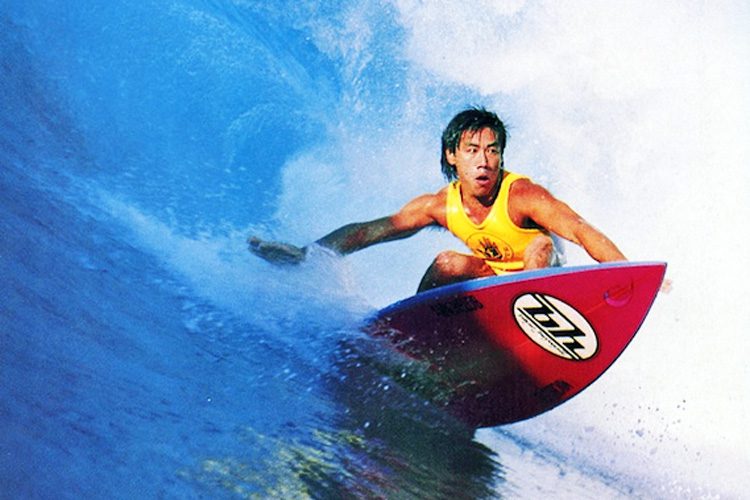History
Mark Foo — The Life, Legacy, and Tragic Death of a Big-Wave Surfing Icon
Image courtesy of KHON2
Introduction — who was Mark Foo?
Mark Foo (1958–1994) was one of Hawaii’s most fearless big-wave surfers, known for chasing the heaviest swells at Waimea Bay, Sunset Beach, and later at the then little-known break of Mavericks in Northern California. Charismatic and articulate, Foo was a bridge between surf media, the professional tour, and the raw power of big-wave surfing. His untimely death at Mavericks in December 1994 cemented his name in surf history.
Early life and Hawaiian roots
Foo was born in Singapore but raised in Hawaii, where he quickly became immersed in Oʻahu’s North Shore surf culture. By his late teens, he was already competing and making a name for himself as a powerful, stylish surfer at Sunset and Waimea. He had a reputation for being media-savvy and willing to promote surfing to a broader audience — which both elevated his profile and drew criticism from traditionalists.
Rise on the North Shore — Sunset & Waimea Bay
During the 1980s, Mark Foo became a standout at Sunset Beach, mastering its shifting peaks, and at Waimea Bay, the spiritual home of Hawaiian big-wave surfing. He often paddled out when others stayed on shore, chasing what he called the “most extreme element of surfing — confronting your own fears.” Foo’s approach made him one of the most recognized figures of the big-wave era.
Mavericks — the wave that changed everything
In the early 1990s, word began to spread of a powerful, cold-water wave breaking off Half Moon Bay, California — Mavericks. Foo joined other pioneers like Jeff Clark, Flea Virostko, and Ken Bradshaw in exploring it. On December 23, 1994, Foo paddled out at Mavericks for the first time. He caught several waves before wiping out on a heavy set. His leash became entangled, and he drowned — a shocking reminder of the risks of big-wave surfing.
The legacy of Mark Foo
Foo’s death sent shockwaves through the surf world. But his legacy lives on in several ways:
-
A symbol of courage: Foo embodied the willingness to push into uncharted waves, inspiring countless surfers to chase bigger challenges.
-
Mavericks’ reputation: His passing brought global attention to Mavericks, transforming it from a secret spot into one of the most famous big-wave arenas on Earth.
-
Safety evolution: His accident underscored the need for improved water safety, leading to the widespread adoption of jet-ski assist, inflatable vests, and big-wave rescue protocols.
-
The “If you don’t live for something, you’ll die for nothing” quote: Though its attribution is debated, the phrase became forever linked with Mark Foo, a fitting expression of his outlook.
Remembering Mark Foo on the North Shore and beyond
Today, Mark Foo is remembered as both a showman and a committed waterman. He helped shape the image of big-wave surfing in the late 20th century and brought global attention to Hawaii’s heavy waves and California’s Mavericks. His story remains a touchstone in surf culture — part triumph, part tragedy.

